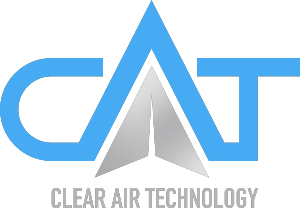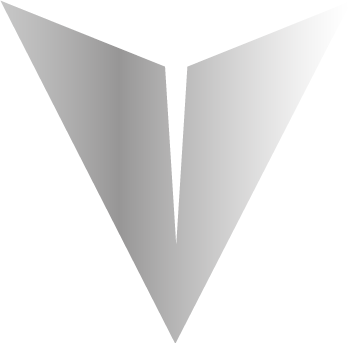Concept
Welcome to the most revolutionary concept that has happened to travel and aviation since the invention of the wheel and the Wright brothers took to the skies – eVTOL also known as UAM (Urban Air Mobility) or as we prefer to call it Personal Air Mobility is the ability for individuals to have freedom of the airways in a way that has never been available before.
Utilising the vast amount of research and development that has already been carried out by many of the fledgling industry pioneers has enabled us to be at the forefront of this disruptive aerial vehicle industry and steal a march on many of our contemporaries.
Clear Air Technology is concentrating on forming essential partnerships with companies that are already leading the way in the new technologies essential to enable us to stay at the forefront of the emerging eVTOL market, not only well respected household names but also the new innovators who are emerging all the time.
We have already been able to develop our first fully operational scale prototype in a fraction of the time that has been achieved by any of the perceived market leaders and we will be utilising this momentum to build our fully operational prototype, SIRIUS over the coming months.

eVTOL
Over the last decade there have been tremendous advancements in electric power systems, technologies have advanced far enough to build a new class of electric vertical take-off and landing (eVTOL) vehicle.
These vehicles use multiple electric motors, banks of batteries and multi-faceted computerised operating systems, giving them inherent redundancies which are just not available in the current aviation environment making them infinitely safer to operate.
Propulsion
At the heart of the propulsion system is the brushless electric motor and whilst we are utilising current state of the art products, the basic design has been proven over decades coupled with very few moving parts makes production and maintenance a relatively simple and cost effective process.
Technology
Aviation has historically been quite slow to embrace significant changes in the operating systems employed by aircraft although this has changed in recent years with the advancement of computerisation and the adoption of the glass cockpit and fly by wire systems.
Future Proofing
However, the significant improvements in obstacle recognition and autonomy whilst available in the most basic of drones have yet to be seen in a commercially available aircraft, this has to change and we will be incorporating this technology into our architecture so that it will be readily available when it becomes acceptable from both a public and regulatory perception. This is similar to what some of the leading electric car manufacturers are doing by future proofing autonomy when it eventually arrives.
eVTOL
Over the last decade there have been tremendous advancements in electric power systems, technologies have advanced far enough to build a new class of electric vertical take-off and landing (eVTOL) vehicle.
These vehicles use multiple electric motors, banks of batteries and multi-faceted computerised operating systems, giving them inherent redundancies which are just not available in the current aviation environment making them infinitely safer to operate.
Propulsion
At the heart of the propulsion system is the brushless electric motor and whilst we are utilising current state of the art products, the basic design has been proven over decades coupled with very few moving parts makes production and maintenance a relatively simple and cost effective process.
Technology
Aviation has historically been quite slow to embrace significant changes in the operating systems employed by aircraft although this has changed in recent years with the advancement of computerisation and the adoption of the glass cockpit and fly by wire systems.
Future Proofing
However, the significant improvements in obstacle recognition and autonomy whilst available in the most basic of drones have yet to be seen in a commercially available aircraft, this has to change and we will be incorporating this technology into our architecture so that it will be readily available when it becomes acceptable from both a public and regulatory perception. This is similar to what some of the leading electric car manufacturers are doing by future proofing autonomy when it eventually arrives.
Certification
Certification will be an essential part of our development and requires close co-operation with the worldwide bodies that are responsible for these processes, the CAA in the UK, EASA in Europe and the FAA in the Americas. EASA have recently stated that “Urban Air Mobility is expected to become a reality within 3 – 5 years” and is actively working on the airworthiness of several pilot projects.
The CAA have formed an Innovation Hub incorporating a Sandbox Framework to support their Future Flight Challenge that has already produced a case study with Volocopter on how this process is working for them.
Safety and reliability are key essentials to the successful adoption of any new technology, especially when it involves high speed travel and the public but another major consideration has to be the acceptance of that technology by the masses. EASA together with McKinsey & Company conducted a comprehensive study on the societal acceptance of UAM operations across the European Union published in May 2021 one of the key findings being that 83% of respondents have a positive initial attitude towards UAM with 71% being prepared to try out UAM services.
EASA will use the study results to prepare an impact assessment and regulatory proposal for Urban Air Mobility in Europe in 2022. The 10 key findings can be found by clicking on the EASA website.
We are under no illusion that the whole certification process will be a complex and sometimes painful process for everyone concerned with the regulatory bodies having to learn how to embrace this new technology and at the same time provide a framework for regulatory compliance but we are committed to working with these bodies to help shape and determine the future.



Conclusion
One of the worlds outstanding businessman and philanthropists of the modern age, Mr William Henry “Bill” Gates III famously said “The Wright Brothers created the single greatest cultural force since the invention of writing. The airplane became the first World Wide Web, bringing people, languages, ideas, and values together.”
Clear Air Technology is now developing the greatest cultural force of the 21st Century, the future of personal transport by creating the worlds first truly affordable, clean and accessible Personal Air Mobility solution to make Mans dreams a reality, to soar high above the ground just as Da Vinci envisaged over 600 years ago.

